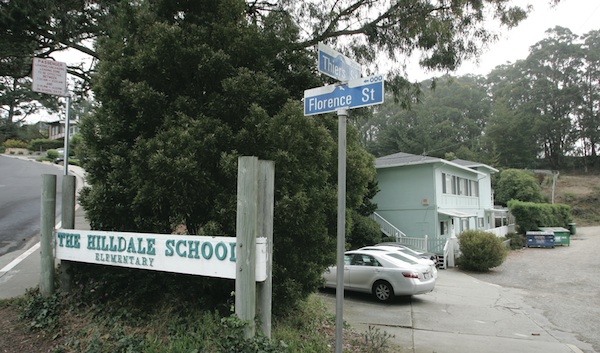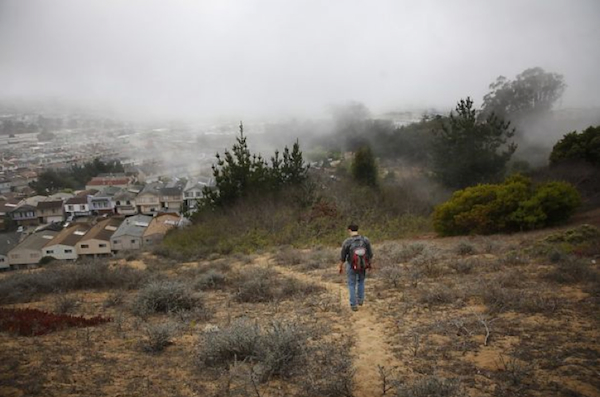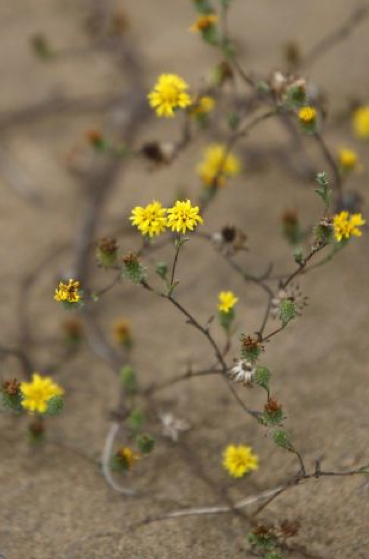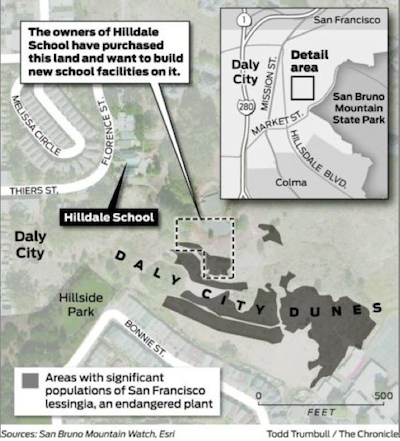SF Examiner article about the Daly City Dunes and the continued threat from development.
by Brendan P. Bartholomew
Special to the SF Examiner
July 11, 2013
San Bruno Mountain development causes dustup
A private school's land purchase on San Bruno Mountain has set the stage for a fight between people looking to develop the plot and conservationists who say building there could harm an endangered plant.
 Michael Koozmin, SF Examiner, 2013The 1 acre of land causing the dustup is in Daly City's Hillside neighborhood and was purchased by Hilldale School in April. Tucked up against the northwestern corner of San Bruno Mountain, the site is home to an endangered species of lessingia plant.
Michael Koozmin, SF Examiner, 2013The 1 acre of land causing the dustup is in Daly City's Hillside neighborhood and was purchased by Hilldale School in April. Tucked up against the northwestern corner of San Bruno Mountain, the site is home to an endangered species of lessingia plant.
San Bruno Mountain Watch Executive Director Ken McIntire said that among the weeds and invasive ice plants in the land are tiny yellow flowers of Lessingia germanorum, which survives only on San Bruno Mountain and in the San Francisco Presidio.
McIntire is constantly battling to stop developers from encroaching upon the mountain. Driving his Toyota Prius through the Northeast Ridge in the hills above Brisbane, he points out a battle the group lost. There, workmen were grading the hillside to erect new homes.
"It's hard for me to come up here," McIntire said.
Hilldale School's owner, John Sittner, said the school's new property had been zoned to have nine houses built on it, which would have been far worse for the neighborhood. Although the school has not yet decided what to do with the land, one possibility is that it will be converted into a soccer field, according to people familiar with the issue.
"If we can utilize that property in a less impactful way than nine houses, that seems like a win-win," Sittner said.
Sittner added that the lessingia is probably on less than 5 percent of his new property, and he said he's committed to protecting the endangered plant.
Although Sittner said any decision about the property's use would be made in concert with his K-8 school's neighbors, he and McIntire seem far apart.
The property is in the middle of a system of ancient sand dunes that formed 80,000 to 125,000 years ago, when the ocean extended into the area. The property also sits above an Ohlone shell mound believed to be 10,000 years old. McIntire said the lessingia needs shifting sand dunes in order to spread and grow, and he said it's impossible to develop Sittner's property without affecting the sand dunes and shell mound.
"As soon as you start messing around with this site, the infrastructure you have to put in to maintain it starts to affect the surrounding ecosystem," McIntire said.
Sittner said it was inevitable somebody would buy and develop the property.
"I think it's important for people to recognize the fact that if a property hasn't been put into use, that doesn't mean it's public," Sittner said.
Daly City Vice Mayor David Canepa said it was too early for him to comment specifically on the matter, because it had not yet come before the City Council.
Speaking more broadly, Canepa said, "I'm committed to making sure San Bruno Mountain maintains its open space so people can recreate and enjoy all it has to offer. ... In an area as built-out as this, San Bruno Mountain is an oasis of open space."
A Letter to the Editor by Del Schembari, a major player in this SBMW advocacy effort, was posted on July 23, 2013:
Mountain dunes should be preserved
A special area in Daly City that we at San Bruno Mountain Watch call The Dunes is in danger of being developed. In your recent article, Hilldale School's owner, John Sittner, declared that his expansion would be better for the area than the previous proposed development. In my view it would be the same destruction, if not worse, than the eight homes proposed for the area before.
Sittner has told San Bruno Mountain Watch that he would like to build classrooms, a soccer field and a parking lot on a rare inland sand dune, on native plants and on a federally listed endangered flower (lessingia). This is just below a million-gallon reservoir that sprung a leak last November above Hillside Park. What could go wrong?
An SBMW biologist has found that the severe grading required for this area would severely damage the native plant populations and possibly alter the water table here and for adjoining properties. This was told to Mr. Sittner before he recently purchased this unique property. He responded that he "couldn't build anywhere else".
The best use for this rare dune is for open space between three heavily congested Daly City neighborhoods. This site is perfect for an open-air museum where kids from the seven surrounding schools, and community, could learn about natural history including an archaeological site, help to remove invasive weeds and restore native ones.
Del Schembari, SBMW Board Member, South San Francisco
















